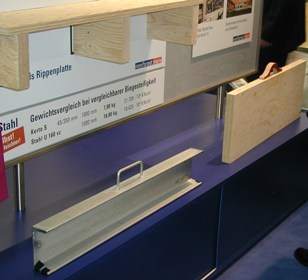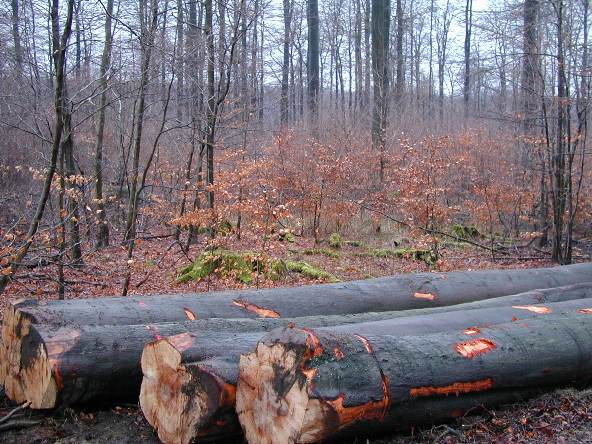Forestry and wood use
projects for climate change mitigation
 |
Using wood (here: LVL = laminated
veneer lumber from sustainable forest
management) instead of steel for
construction reduces energy
consumption and by this CO2-emssions.
Due to rising steel prices it is
also becoming more and more
economical! |
In 2007 the
Intergovernmental Panel on Climate Change
(IPCC) published its latest report in
three parts.
Forests play an important role in the global
carbon cycle.
Forestry projects even outside the forests
offer a variety of toeholds for climate
change mitigation … with a lot of positive
ecological and socio-economic side-effects!
It is not only carbon storage but also
reduction of energy consumption.
Afforestation and reforestation is a
precondition for an increased use of wood
which itsself can be an important means to
reduce CO2-emssions. See recent
publication of Dr. Ernst Kürsten "How
forest industries may contribute to
environmental protection" (WoodNews 17
(6), Mar - Apr 2008, pp. 8-15)
Summary: Many life cycle analysis
in the US, Germany and elsewhere have shown
that products from wood are often the better
choice with regard to environmental
protection as compared to those made from
other raw material. The same is true for
many non timber forest products. Planting
and sustainable management of forests and
agroforestry systems is a basic precondition
to achieve these environmental benefits and
should be one important part of India´s
approach for sustainable development.
(download full text as PDF)
Up to now forestry projects play a very
small role in the scope of registered
CDM-projects.
But they are more important on the voluntary
carbon market …
… and they may gain more official
recognition in the future (e.g. avoided
deforestation projects).
 |
|
Sustainable
production of timber is possible not
only in plantations or by selective
fellings in natural forests but also
in close-to-nature silvicultural
system like this beech stand (Fagus
sylvatica) in Northern Germany
(Deister). In Germany there are more
than 200 years of experience with
this kind of sustainable forest
management. (See:
Forestry in Germany) |
 |
|
Clonal plantations
belonging to farmers (like in
Punjab) can provide excellent raw
material for veneer making and even
some space for crops or medical
plants beteween the tree rows: from
an ecological point of view a much
better choice than an ore mine. |
|
